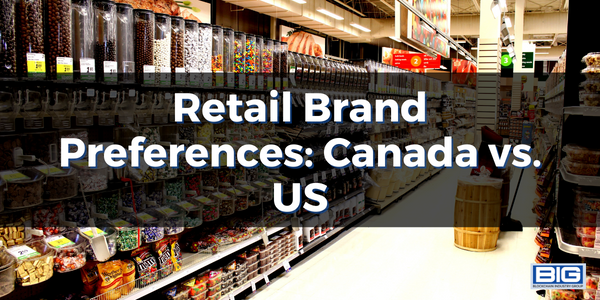
Retail brand preferences can vary significantly from one country to another, and understanding these differences can be important for businesses looking to expand into new markets. In this article, we’ll compare and contrast retail brand preferences between the people in Canada and the United States, providing examples, illustrations, and insights.
One of the main differences between retail brand preferences in Canada and the United States is the level of loyalty to domestic brands. In Canada, there is generally a strong preference for domestic brands, and many Canadians are willing to pay a premium for products made in Canada. This preference for domestic brands is often driven by a sense of national pride and a desire to support the local economy. For example, Canada Goose, a Canadian apparel company, is highly popular in Canada and has a loyal following.
In contrast, in the United States, there is generally a greater preference for international brands, and many Americans are willing to pay a premium for products that are perceived as high-quality or fashionable. This preference for international brands is often driven by a desire for status and prestige, and a belief that international brands are more likely to offer a wider range of products and styles. For example, Apple, a multinational technology company, is highly popular in the United States and has a loyal following.
Another difference between retail brand preferences in Canada and the United States is the level of emphasis on price. In Canada, there is generally a greater emphasis on price, and many Canadians are willing to shop around and compare prices before making a purchase. This emphasis on price is often driven by a desire to save money and a belief that cheaper products are often of equal or reasonable quality. For example, Walmart, a discount retail chain, is highly popular in Canada and has a loyal following.
LinkedIn’s Important Revenue Sources
—
Marketing and the Promise of Future Technology
—
Optimizing Your LinkedIn Profile for Opportunities
In contrast, in the United States, there is generally a greater emphasis on value, and many Americans are willing to pay a higher price for products that are perceived as high-quality or fashionable. This emphasis on value is often driven by a desire for status and prestige, and a belief that higher-priced products are of higher quality. For example, Nordstrom, a high-end department store, is highly popular in the United States and has a loyal following.
Overall, retail brand preferences can vary significantly from one country to another, and it’s important for businesses looking to expand into new markets to understand these differences. By understanding the preferences of consumers in different countries, businesses can tailor their marketing and branding efforts to better appeal to their target audience and achieve success in their new market.



